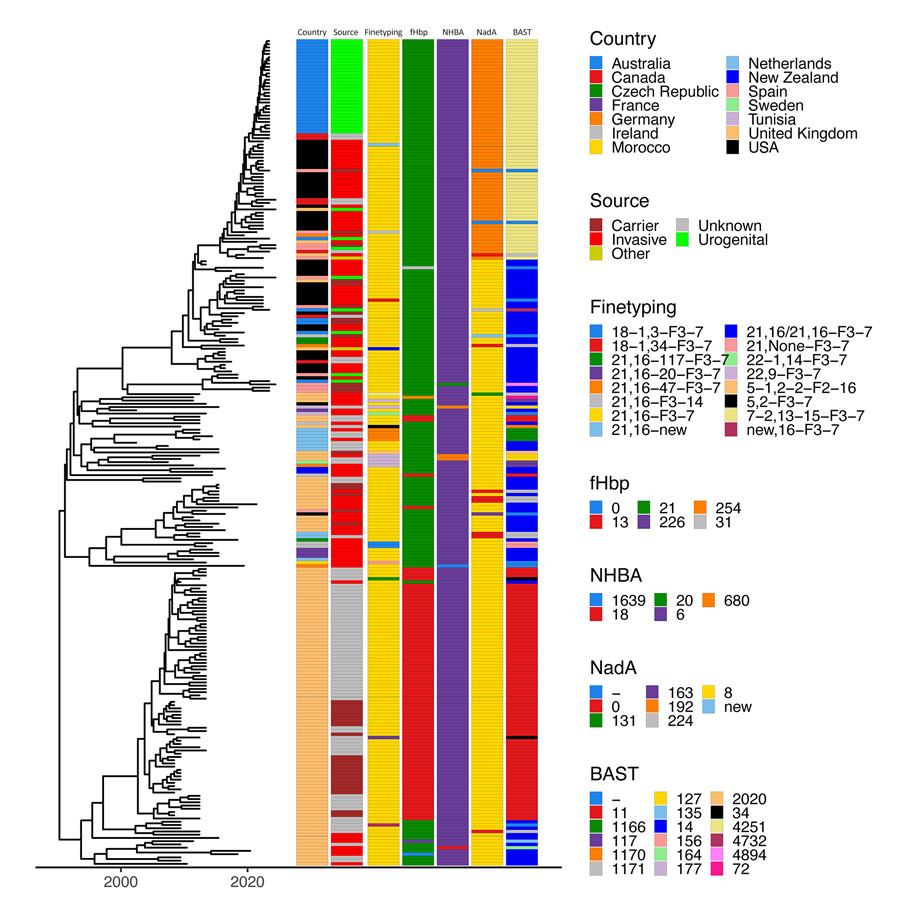Volume 31, Number 1—January 2025
Research
Neisseria meningitidis Serogroup Y Sequence Type 1466 and Urogenital Infections
Figure 2

Figure 2. Timed maximum-likelihood phylogeny showing finetyping of Neisseria meningitidis serogroup Y ST1466 isolates from Australia and the United States compared with isolates from other countries. Associated metadata shown to the right of the tree are country of origin; source; finetyping profile; virulence profiles for fHbp, NHBA, NadA allele types; and overall BAST sequence typing result. Dashes indicate insufficient or incomplete data. BAST, Bexsero Antigen Sequence Typing.
Page created: December 04, 2024
Page updated: December 22, 2024
Page reviewed: December 22, 2024
The conclusions, findings, and opinions expressed by authors contributing to this journal do not necessarily reflect the official position of the U.S. Department of Health and Human Services, the Public Health Service, the Centers for Disease Control and Prevention, or the authors' affiliated institutions. Use of trade names is for identification only and does not imply endorsement by any of the groups named above.